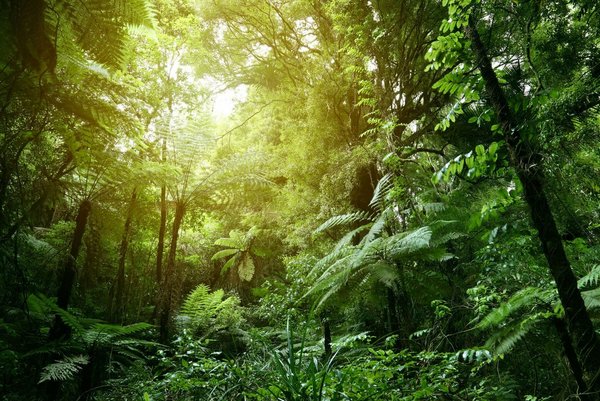- Share this article
- Subscribe to our newsletter
Tropical forests recover surprisingly fast
“While it is essential to actively protect old-growth forests and stop further deforestation, tropical forests have the potential to regrow naturally in deforested areas on abandoned lands,” says Professor Lourens Poorter from Wageningen University, lead author of a study on forest recovery published in December 2021. “These regrowing forests cover vast areas and can contribute to local and global targets for ecosystem restoration. They have a beneficial global impact on climate change mitigation and adaptation and on biodiversity conservation, and they provide many other services for local people, such as water, fuel, wood, and non-timber forest products.”
According to the study, characteristic attributes (for example soil fertility, soil carbon storage, tree diversity, plant functioning and forest structure) reach on average nearly 80 per cent of old-growth forest values after 20 years. The study, produced by Wageningen University with support from the German Centre for Integrative Biodiversity Research (iDiv), concludes that natural regeneration is a low-cost, nature-based solution for climate change mitigation, biodiversity conservation, and ecosystem restoration.
The researchers found that these secondary forests recover surprisingly quickly, indicating that natural tropical forest restoration generates significant short-term benefits. However, the speed of recovery differs considerably across forest attributes. Recovery to 90 per cent of old-growth forest values is fastest for soil fertility (less than 10 years) and for plant functioning (less than 25 years), intermediate for structure and species diversity (25-60 years), and slowest for above-ground biomass and species composition (more than 120 years).
Secondary forests are forests that regrow naturally after the nearly complete removal of forest cover for anthropogenic use (usually for shifting cultivation, conventional cropping or cattle ranching). In tropical Latin America, secondary forests cover as much as 28 per cent of the land area.
Given the local and global importance of secondary forests and their rapid recovery after 20 years, the authors recommend the adoption of (assisted) natural regeneration as a low-cost, nature-based solution. This could be a simple but efficient measure for meeting the United Nations’ Sustainable Development Goals as well as the aims of the UN Decade on Ecosystem Restoration (2020-2030), the UN Framework Convention on Climate Change (COP 26) and the Convention on Biological Diversity (COP 15).
The authors point out that various solutions – ranging from natural regeneration, assisted natural regeneration, agroforestry through to plantations – will be needed depending on the on-site conditions, the local population and their needs.
(iDiv/Wageningen University/ile)





Add a comment
Comments :